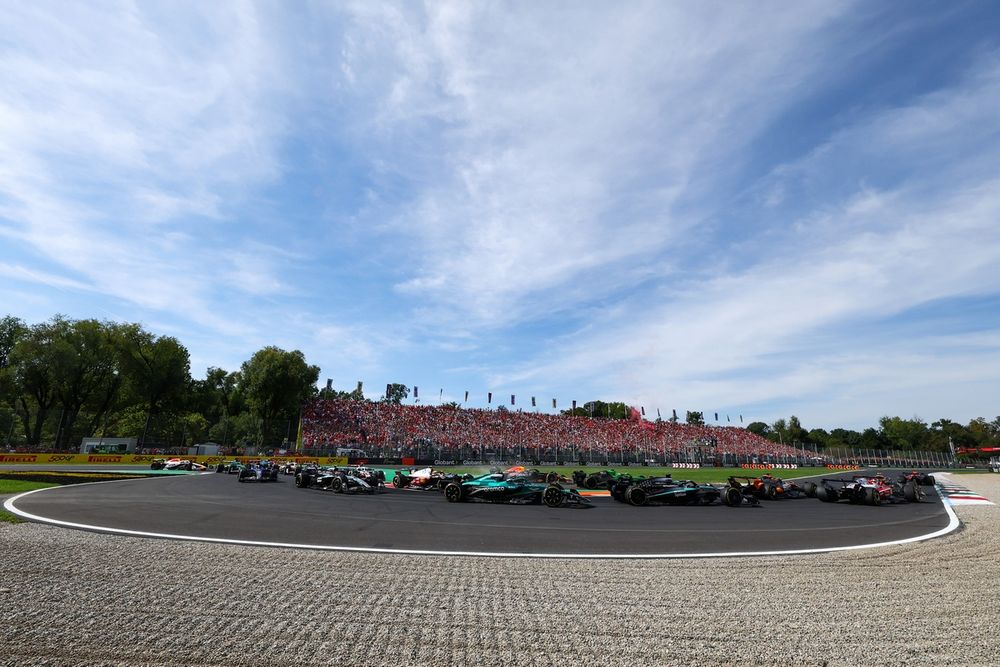Components 1 has a packed calendar that takes in 24 tracks throughout 21 international locations in 5 continents, nevertheless it takes greater than a pleasant ribbon of tarmac to hitch the championship.
F1 and the FIA have strict tips over what circuits can host a grand prix and so they should be labeled as Grade 1 to qualify. This is the highest degree of the FIA’s seven-tiered system that covers every thing from drag strips to rally levels. Â
The FIA grading system units out the foundations and necessities for various venues, every masking numerous security points or monitor traits. For Grade 1 venues, these are all with the goal of creating the monitor protected for automobiles with an influence to weight ratio of lower than 1hp/kg. Â
The structure necessities of a Grade 1 circuitÂ
The FIA has a set of fundamental necessities {that a} monitor should meet so as to be labeled as Grade 1, however importantly a few of these solely apply to newly constructed venues. Â
Firstly, the circuit itself should be at the least 3.5km and not more than 7km in complete. The FIA additionally mandates that there ought to be no straights longer than 2km – Baku and its 2.2km straight are a uncommon exception to this rule. Â
The Baku straight is greater than 2km lengthy
Photograph by: Pauline Ballet – Components 1
The following huge necessities relate to the width of various circuits, in order that the tarmac is extensive sufficient for automobiles to simply move with out being run into partitions, grass or gravel traps. The FIA mandates that circuits be a minimum of 12m extensive, though non permanent road tracks like Monaco get an exception to this rule. Within the principality, the monitor averages round 10m extensive throughout the lap, main some critics to argue that it isn’t match for at present’s two-metre-wide F1 automobiles. Â
The beginning of the race should additionally meet a number of parameters, with the grid required to be at the least 15m extensive and the beginning line positioned “ideally” 250m from the primary nook. Spots on the grid should be spaced 6m aside, though for F1 this rises to 8m, and the primary flip ought to present a change of path of at the least 45 levels and have a radius of lower than 300m. Â
There are additionally guidelines across the pitlane, which ought to be at the least 12m extensive and adjoining to the start-finish straight. Pit entry and exit factors can’t intervene with the racing line, so automobiles don’t collide when rejoining the monitor.Â
Different guidelines cowl the gradient of a circuit, which may’t be greater than 2% on the beginning/end straight, and any banking on monitor shouldn’t exceed 5.7 levels – though there are exceptions to this rule for Turns 3 and 14 at Zandvoort. Â
The security necessities of a Grade 1 circuit Â
The rules round F1 circuits do not simply apply to the structure of a monitor, because the FIA additionally has strict necessities with regards to circuit security. Â

Runoff and crash barrier necessities range throughout every circuit
Photograph by: Zak Mauger / LAT Pictures by way of Getty Pictures
Firstly, there are guidelines across the obstacles and runoff necessities for Grade 1 tracks, which differ from decrease grade circuits as a result of increased speeds of the automobiles that race on them. These range monitor by monitor and rely on nook layouts and the forms of runoffs used – whether or not that’s grass, gravel or a protracted tarmac escape highway earlier than a mixture of deceleration beds, stopping obstacles, and energy-absorbing obstacles.Â
Away from the monitor itself, the FIA additionally has strict necessities concerning the medical amenities on website. From Grade 4 upwards, the medical centre should be a everlasting fixture of the monitor and for high-level occasions like F1, there must be at the least two docs current throughout the race weekend. There should even be at the least two surgeons on website who’re in a position to deal with accidents similar to burns, spinal accidents and concussions. Â
By way of the tech and amenities that should be current in each medical centre, the FIA requires gear like ventilators, heart-rate screens, oxygen provides, x-rays, ultrasound gear, and extra.Â
What different guidelines should Grade 1 tracks meet? Â
The FIA has an entire host of different stipulations round the kind of circuits that may host F1 races. There are guidelines across the drainage on the straights in order that venues don’t get waterlogged, which incorporates reducing groves into the tarmac to assist waterflow and having a slope of as much as 1.7 levels. Â
There’s additionally a posh formulation to calculate the variety of automobiles that may run on a Grade 1 monitor, however F1 has its personal guidelines for the variety of runners. Â

Promoting boards should be safe
Photograph by: Sam Bagnall / Motorsport Pictures
Then, there are guidelines round promoting gear at races, with the FIA mandating that promoting boards across the exterior of the circuit should be steady and safe, and so they shouldn’t intervene with drivers or officers’ visibility. Observe surfaces should not allowed to hold adverts, and any advertisements on run-off areas mustn’t cut back the skid resistance that slows automobiles down within the occasion of a collision.Â
Lastly, with regards to the fan expertise, the FIA doesn’t have a algorithm round capability or infrastructure, nevertheless it does require that public areas are accessible to followers with disabilities. At the least, the FIA suggests putting in a chosen viewing space for disabled spectators, specialist bathroom amenities, reserved parking locations and paved pathways that permit folks in wheelchairs to get round.Â
Each FIA Grade 1 circuit world wideÂ
Grade 1 Circuits on the 2025 F1 Calendar
Grade 1 Circuits not on 2025 F1 Calendar
Albert Park, AustraliaÂ
Algarve Worldwide Circuit, Portugal
Shanghai Worldwide Circuit, ChinaÂ
Bahrain Oasis Circuit, Bahrain
Suzuka, JapanÂ
Bahrain Outer Circuit, Bahrain
Bahrain Worldwide Circuit, Bahrain
Bahrain Paddock Circuit, Bahrain
Jeddah Corniche Circuit, Saudi ArabiaÂ
Bahrain “Endurance”, Bahrain
Miami Worldwide Autodrome, USAÂ
Circuit Paul Ricard, France
Imola, ItalyÂ
Dubai Grand Prix Circuit, UAE
Circuit de Monaco, Monaco
Dubai Worldwide Circuit, UAE
Circuit de Barcelona-Catalunya, Spain
Estoril, Portugal
Circuit Gilles Villeneuve, CanadaÂ
Fuji Speedway, Japan
Pink Bull Ring, Austria
Hockenheimring, Germany
Silverstone, UK
Igora Drive, Russia
Spa-Francorchamps, Belgium
Indianapolis Grand Prix, USA
Hungaroring, Hungary
Istanbul Park, Turkey
Circuit Zandvoort, Netherlands
Jerez, Spain
Autodromo Nazionale Monza, Italy
Korea Worldwide Circuit, South Korea
Baku Metropolis Circuit, Azerbaijan
Kuwait Motor City, Kuwait
Marina Bay Avenue Circuit, Singapore
Magny-Cours, France
Circuit of the Americas, USA
Moscow Raceway, Russia
Autodromo Hermanos Rodriguez, Mexico
Motorland Alcaniz, Spain
Autodromo Jose Carlos Tempo, Brazil
Motorland Aragon Alcaniz – Aerotest, Spain
Las Vegas Strip Avenue Circuit, USAÂ
Motorland Aragon Alcaniz – FIM, Spain
Losail Worldwide Circuit, QatarÂ
Motorland Aragon Alcaniz – Lengthy, Spain
Yas Marina Circuit, Abu Dhabi
Mugello, Italy
Â
Buddh Worldwide Circuit, India
Â
Nurburgring Grand Prix, Germany
Â
We wish your opinion!
What would you wish to see on Motorsport.com?
– The Motorsport.com Workforce










